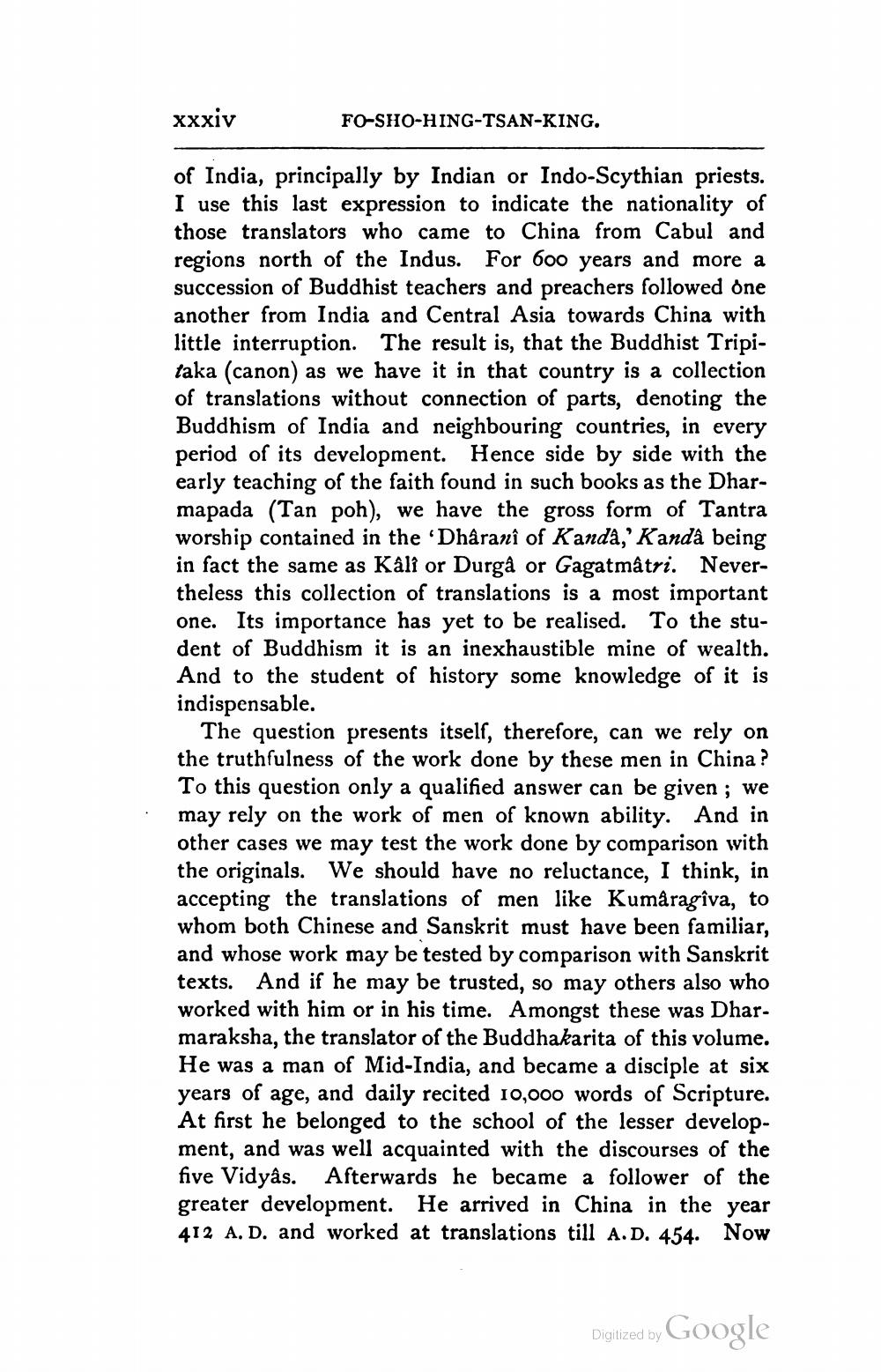________________
xxxiv
FO-SHO-HING-TSAN-KING.
of India, principally by Indian or Indo-Scythian priests. I use this last expression to indicate the nationality of those translators who came to China from Cabul and regions north of the Indus. For 600 years and more a succession of Buddhist teachers and preachers followed one another from India and Central Asia towards China with little interruption. The result is, that the Buddhist Tripitaka (canon) as we have it in that country is a collection of translations without connection of parts, denoting the Buddhism of India and neighbouring countries, in every period of its development. Hence side by side with the early teaching of the faith found in such books as the Dharmapada (Tan poh), we have the gross form of Tantra worship contained in the 'Dhâranî of Kanda, 'Kanda being in fact the same as Kalî or Durga or Gagatmâtri. Nevertheless this collection of translations is a most important one. Its importance has yet to be realised. To the student of Buddhism it is an inexhaustible mine of wealth. And to the student of history some knowledge of it is indispensable.
The question presents itself, therefore, can we rely on the truthfulness of the work done by these men in China ? To this question only a qualified answer can be given ; we may rely on the work of men of known ability. And in other cases we may test the work done by comparison with the originals. We should have no reluctance, I think, in accepting the translations of men like Kumaragîva, to whom both Chinese and Sanskrit must have been familiar, and whose work may be tested by comparison with Sanskrit texts. And if he may be trusted, so may others also who worked with him or in his time. Amongst these was Dharmaraksha, the translator of the Buddhakarita of this volume. He was a man of Mid-India, and became a disciple at six years of age, and daily recited 10,000 words of Scripture. At first he belonged to the school of the lesser development, and was well acquainted with the discourses of the five Vidyâs. Afterwards he became a follower of the greater development. He arrived in China in the year 412 A. D. and worked at translations till A.D. 454. Now
Digitized by Google




